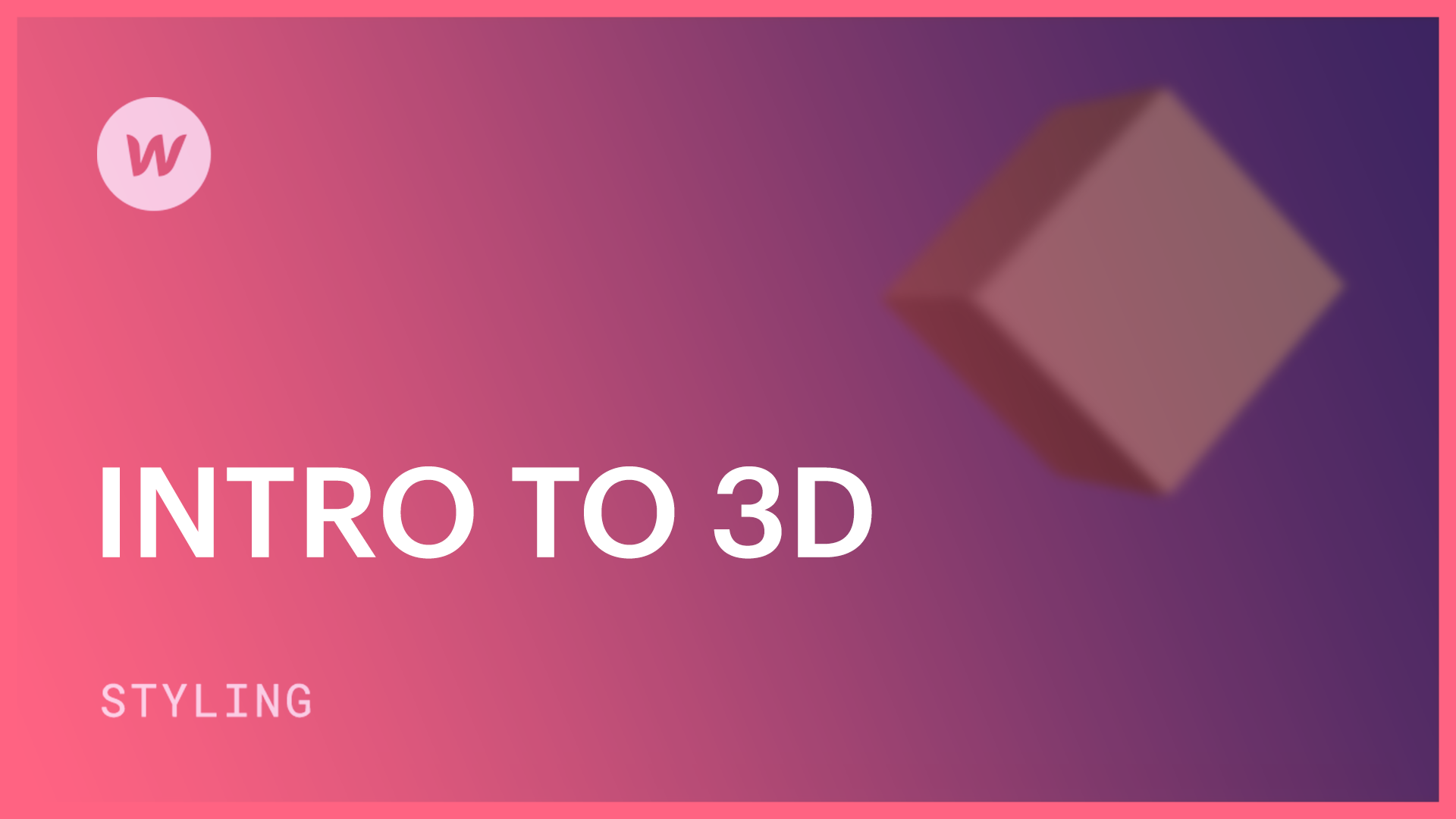This article will discuss some essential concepts related to 3D on the internet. Explore the guide on 2D & 3D transformations to understand how to implement these ideas in your Webflow project.
Topics covered in this tutorial:
- Grasping basic 2D principles
- Horizontal and vertical movement
- Introduction to the third axis – Z
- Overview of parallax
- Placement of 2D objects in a 3D setting
Understanding Basic 2D Concepts
Before delving into three dimensions, it’s important to comprehend the workings of the initial two dimensions. Specifically, this entails movements horizontally along the X-axis and vertically along the Y-axis.
The majority of web content comprises 2D components. This includes elements such as images, headings, paragraphs, and buttons found on websites. The dimensions of these elements, including width, height, and distances between them and others, all occur in two dimensions, lacking actual depth.
Movement Along Axes
When elements move horizontally, their X-position adjusts. Likewise, vertical movement involves adjustment of the Y-position. Diagonal movement is achieved through a combination of X and Y adjustments.
Thus, positioning in two dimensions involves the X-axis and the Y-axis.
Introduction to the Z-Axis
Now, let’s focus on the third dimension: Z-axis. When working with three dimensions, it’s not just about moving left, right, up, and down; it also involves depth.
Given that the web comprises many 2D elements, let’s take them as an example. Not all 3D elements need to be protrusions or complete 3D objects. In fact, individual 2D elements can be manipulated within 3D space along the Z-axis. They can be moved, rotated – essentially, anything is possible.
Overview of Parallax
One fascinating aspect of 3D motion is the concept of parallax. In the example below, we have cards on a table to demonstrate parallax. None of the cards are physically moving; instead, the camera or field of view is shifted solely along the X-axis.
Observe how cards closer to us seem to move faster, while those in the distance appear to move more slowly. This variation in speed between near and far objects is known as parallax.
2D Elements in Three-Dimensional Space
The fascinating part is that these cards lack depth entirely. When viewed from the side, they vanish. The crucial point is that 3D motion doesn’t always require 3D objects.
By incorporating parallax motion, we can add depth to our projects. Moving various elements at slightly different speeds can effectively create a three-dimensional appearance.
- Include or eliminate Workspace spots and members - April 15, 2024
- Centering box summary - April 15, 2024
- Store a site for future reference - April 15, 2024
